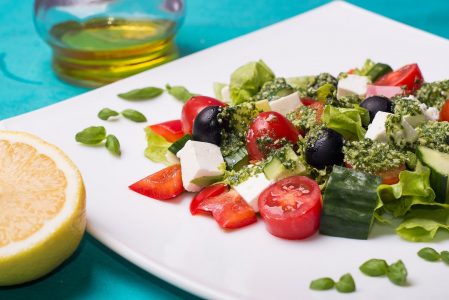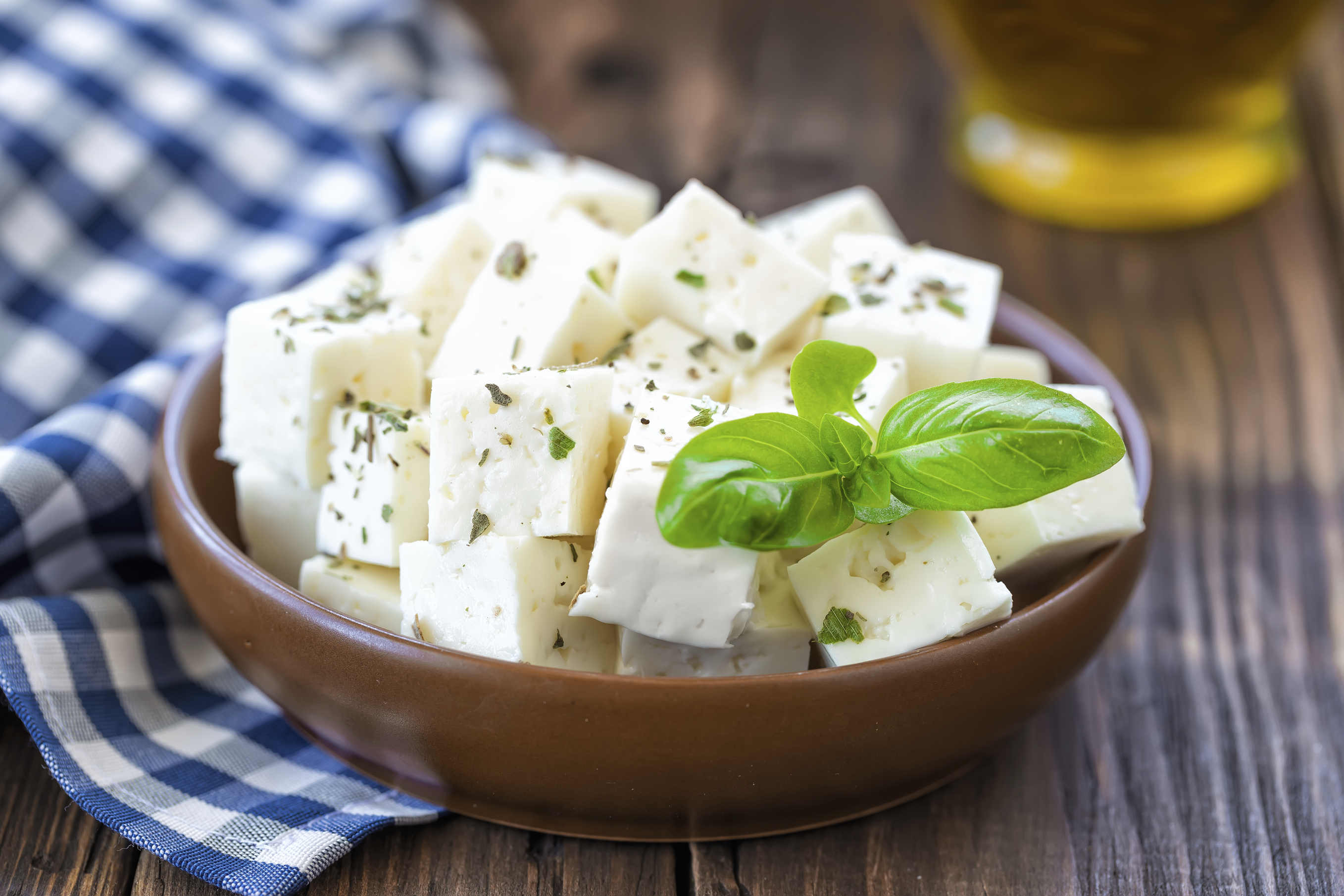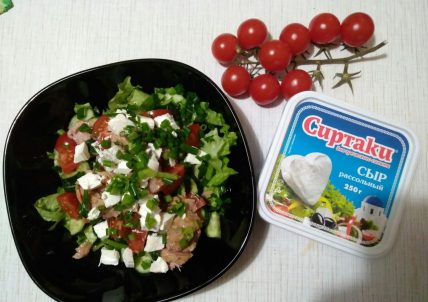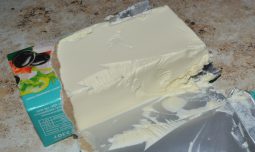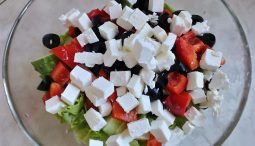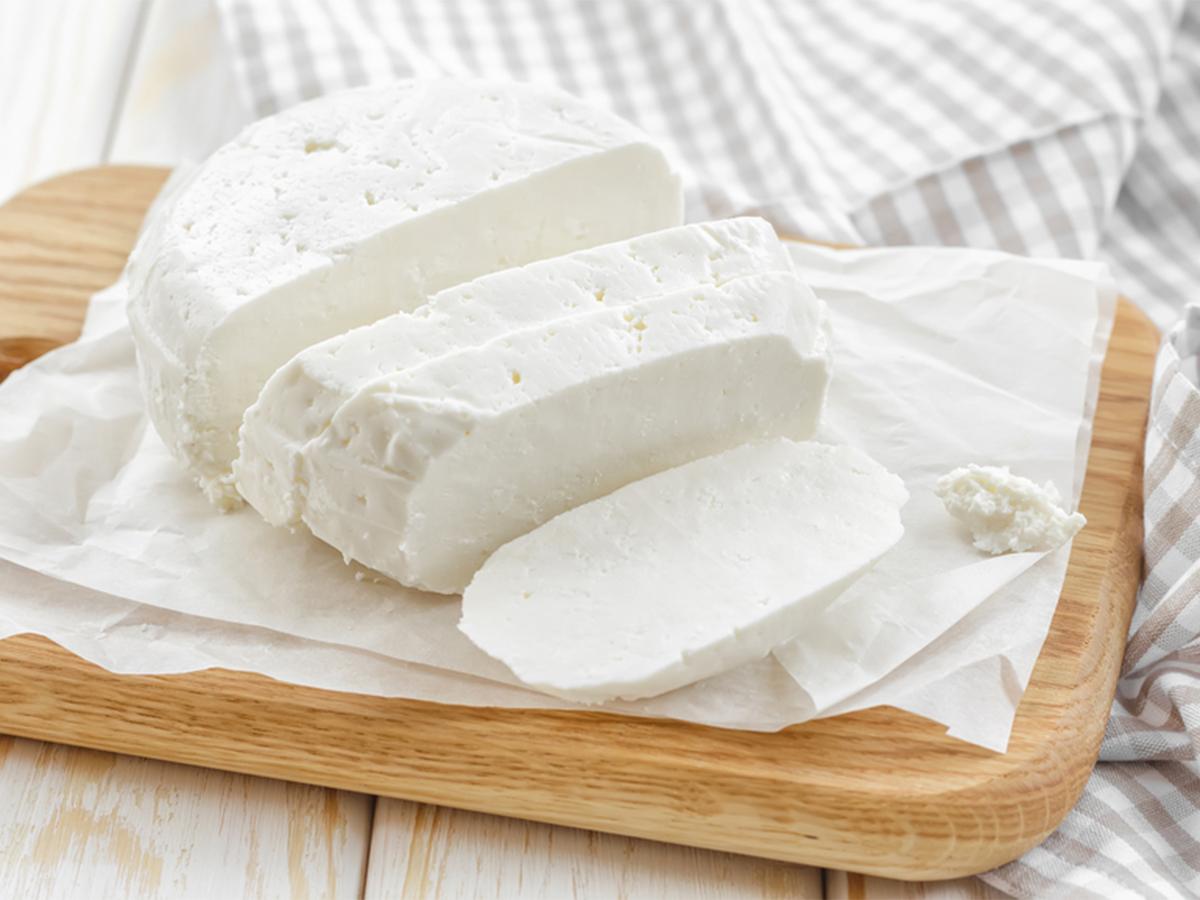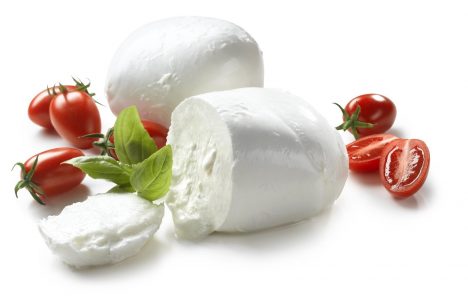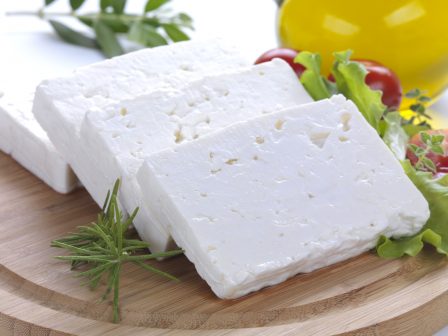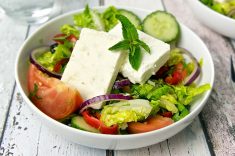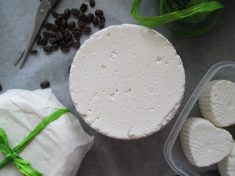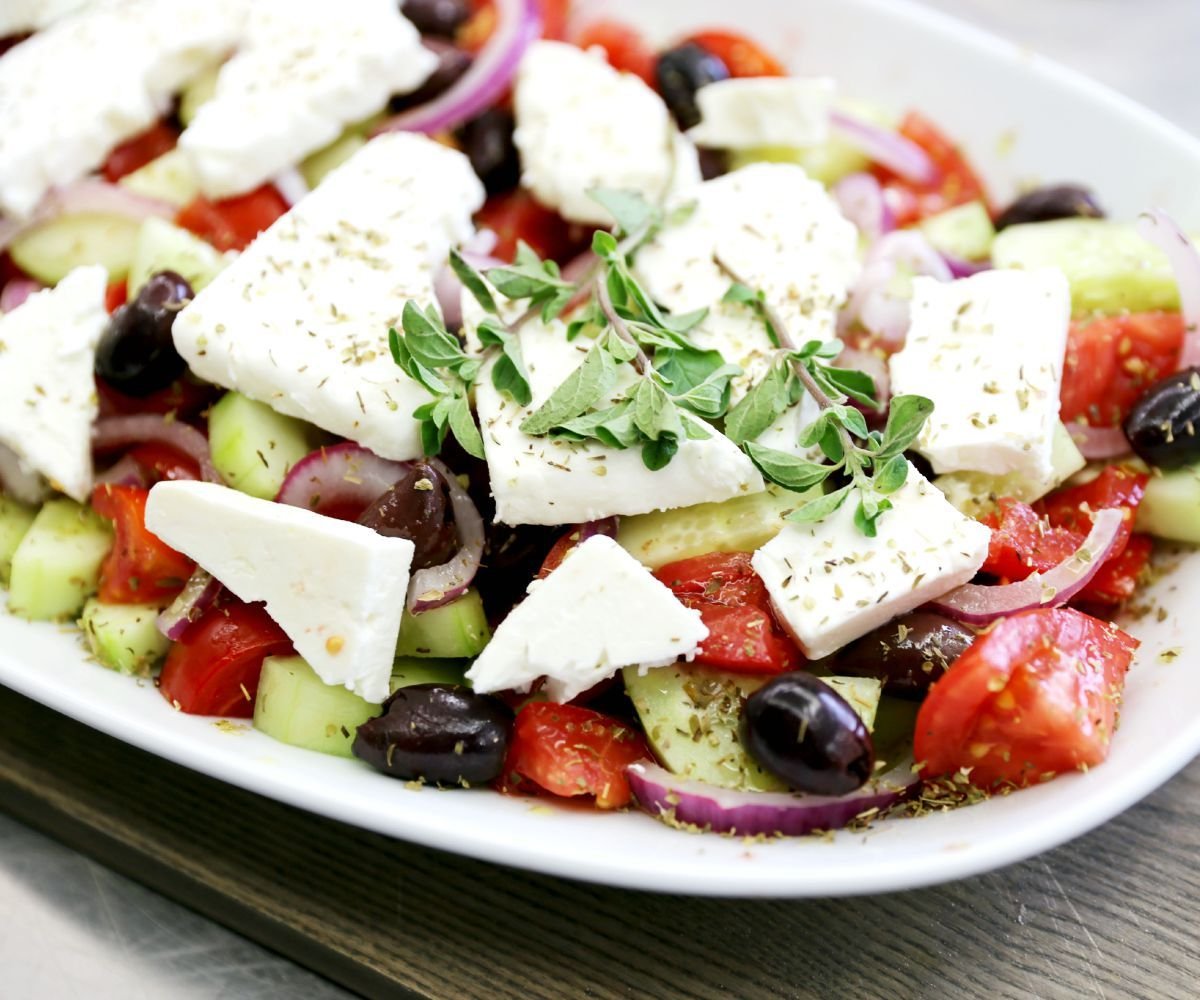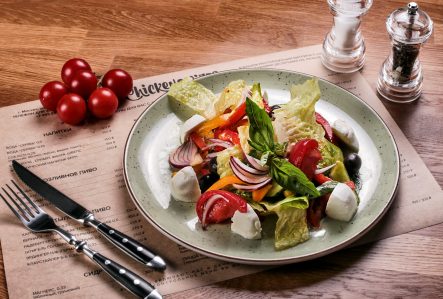At first glance, it’s very easy to cook Horiatiki, a world-famous culinary masterpiece that we call Greek salad. But behind the deceptive simplicity of the dish lies a lot of subtleties and secrets. For example, do you know for sure which cheese is the most suitable for Greek salad, which spices are appropriate in it, do you need to strictly follow the recipe, or are experiments still permissible? Let's try to figure it out.
Material Content:
Dish history
The original name of the famous dish is translated from Greek quite simply - “village salad”, which, in fact, reflects the elementary nature of the food set required for its preparation.
The story of the creation of the dish, which has three variations, is also straightforward:
- According to one of the assumptions, it saw the light during the life of Homer, and all products made by the ancient Hellenes entered there. All would be fine, but in fact, the tomatoes, which are the main components of the salad, were brought into the country much later - in the distant 19th century.
- Many connoisseurs arouse skepticism and a beautiful legend, according to which an emigrant from America accidentally invented the dish, who came home to the wedding of his nephew. He was so yearning in a foreign land for familiar foods that he only dreamed of tasting them again all the way. But here's the bad luck - a toothache broke all the gastronomic plans of the young man. In desperation, the young man chopped smaller vegetables, hoping to make them softer, poured them with olive oil, and seasoned them with a piece of cheese.The resulting result pleased, and at the same time, interested the sister of the young man, who, having rated the dish perfectly, the next day treated them to a good hundred guests at the wedding. As you can see, the Greeks liked the salad.
- For rational scholars, deprived of a share of romanticism, food is seen as an invention of the cunning owners of Greek taverns. In the hope of making more money from tourists who invaded the country in the 60-70s. last century, they were looking for an interesting national dish for the menu. Elementary products, quick cooking, minimum working hands - these were the main criteria. So the first variation of the salad appeared - a kind of vegetable cut seasoned with spices and oil. Sheep cheese was added to her local flavor - the pride of Greek craftsmen. We’ll talk about him further.
What cheese is traditionally added to Greek salad?
The Greeks themselves use exclusively feta. This cheese is prepared from sheep and goat milk with the addition of a special rennet produced by the gastric glands of a number of mammals.
Outwardly, it looks like a piece of pressed cottage cheese floating in a brine. His color is perfectly white without a hint of yellowness, the taste is pungent, unlike any other cheese - tart-tender, moderately salty with subtle acidity.
The product favorably sets off the taste characteristics of vegetables and herbs that make up the salad, without interrupting them. It is feta that gives the dish the same flavor and Greek charm, and also a juicy creamy aftertaste, which is highly appreciated by fans.
Read also:greek salad - classic recipe
How can I replace the product
In the era of the magnitude of globalization, the question may seem strange - why replace something with soft sheep’s cheese when there are dozens of varieties of this variety offered by local and European producers on the shelves of supermarkets?
And here is the attention: “Feta” is an indication of the geographical origin of the product protected by EU law, which is why cheese made exclusively in Greece can be called that. If the packaging does not have the mark Made in Greece, this is not feta at all, but analogues prepared in a modern way and having an excellent structure.
When you want to taste the popular Mediterranean dishes, but it is not possible to find the original product, or if the price is “affordable”, you have to guess how to replace feta cheese in Greek salad, so that the selected variety does not overshadow other components, but only emphasizes their juiciness and richness. The logical answer is structurally related brine counterparts.
Interestingly, during periods of religious fasting, when animal products are banned, the original cheese in the dish perfectly replaces soy tofu.
Suitable cheese varieties for snacks
Brynza, suluguni, fetax, sirtaki, mozzarella, Adyghe cheese - the most popular solutions. Fans of experiments go even further - they prepare homemade yogurt cheese, which is subsequently soaked in a special brine. Unpretentious cooks do not philosophize crafty, but use ordinary processed cheese. Gourmets use fried cheese, believing that it gives the dish a touch of restaurant chic and high cost.
Such culinary intrigues are quite acceptable, however, if you want to know the true taste of the famous Greek masterpiece, it is important to remember that the cheese component plays one of the leading roles in it. What kind of cheese do culinary experts add to Greek salad in different parts of the world? Consider all the best options.
Sirtaki for Greek Salad
Sirtaki is mistakenly attributed to Greek cheeses. In fact, this is only a trade name, offering consumers an analog of the original product. It is the same snow-white, juicy, fragrant, with an abundance of calcium and protein. The main differences from feta are its high density and strong salinity.
In taste, this cheese is very similar to feta cheese: using syrtaki for Greek salad, you need to salt the dish just a little bit, or even not use this spice.
The taste of brackish cheese in combination with vegetables can give a completely harmonious ensemble. The main thing is to choose the optimal proportions of the ingredients and purchase a quality product from a reliable manufacturer. In this case, it will be possible to make a salad with sirtaki, which will be perceived by taste buds as well as the classic one.
Adyghe cheese
Often, culinary specialists use Adyghe cheese, a creation of the peoples of the North Caucasus, to prepare a modern variation of Horiatiki. This product is considered a close relative of feta, however, their similarities are only in the soft structure and curdled consistency. This variety is much more dense, its taste is pure sour-milk. The product is not salted during manufacture, so it turns out to be rather bland. The color of the cheese is close to white, but it is not snow-white, like feta. In addition, Adyghe cheese is less high-calorie, so it is ideal for dietary nutrition.
Using this particular variety for Greek salad, you have to worry about proper dressing with a rich and vibrant flavor, otherwise the overall “bouquet” will turn out to be rather boring and bland.
Mozzarella
Italian mozzarella cheese is a natural and extremely healthy product, an undeniable dietary source of milk protein and calcium. This variety is in harmony with tomatoes and olives, so it will definitely add lovely creamy notes to the “vegetable plate”.
Cheese differs from feta in a denser structure and lack of characteristic acidity, but it is also made from cow's milk, not sheep’s milk. In general, mozzarella is a worthy analogue of Greek feta in the salad of the same name.
Brynza
Many chefs are firmly convinced that feta cheese is unacceptable for Greek salad. The excessive salinity of the variety simply overshadows all the other ingredients, leaving no trace of the delicate, refined taste of the original dish.
But there are also supporters of sheep cheese, who prove that it is it that is most similar to sheep’s cheese in terms of production technology, structure and taste. And its useful qualities are beyond any doubt. Therefore, in the absence of other options, feta cheese can be quite successfully used for Greek salad, but with one amendment: brine cheese must be pre-soaked in order to reduce its salinity.
For this, the product is cut into slices of medium thickness and poured with milk or cold filtered water for 8-12 hours. If, instead of ordinary water, carbonated water is taken, the soaking process will be several times faster.
Greek salad step by step recipes
Greek salad classic
In the original version, Horiatiki is made from coarsely chopped, chilled vegetables exclusively with purple onions and black olives.
For 2 servings you will need:
- 2 cucumbers;
- 2 tomatoes with dense pulp;
- 1 bell pepper yellow;
- 0.5 Crimean bulbs;
- 20 pcs. large pitted olives;
- 100 g feta cheese;
- 3 tbsp. l olive oil (Extra virgin);
- 1.5 tbsp. l lemon juice;
- 0.5 tsp oregano;
- clove of garlic;
- by ¼ tsp salt and black pepper.
Step by step cooking:
- For dressing, mix crushed garlic, salt, spices, lemon juice and oil, whisk lightly so that the ingredients join together as tightly as possible.
- My vegetables, peeling cucumbers from peel, pepper - from seeds. We cut tomatoes into slices, cucumbers and peppers - in large pieces at least 2-2.5 cm, onions - in half rings.
- Olives in the classic recipe are not cut, feta too.
- We spread the vegetables in a picturesque mess, supplement with olives, pour dressing, spread the feta in a single piece on top, sprinkling a pinch of oregano.
- We serve the dish to the table, stirring it right at the table before eating (cheese easily breaks into pieces of arbitrary shape).
By analogy with the classic recipe, the salad is prepared with sirtaki and feta cheese. In both interpretations, salt is excluded from the list of ingredients, and in the second embodiment, the cheese is also soaked in advance.
Greek salad with fried Adyghe cheese
Ingredients for the base:
- 2 cucumbers;
- 3 tomatoes;
- 2 multi-colored bell peppers;
- 1 red onion;
- 20 pitted olives;
- 300 g Adyghe cheese.
Ingredients for Refueling:
- 6 tbsp. l vegetable oil;
- 2 tbsp. l balsamic vinegar;
- a pinch of oregano;
- salt, pepper to taste.
Step by step cooking:
- My vegetables, cut large. Peel the onion, cut into half rings.
- We spread the slices of cheese on a hot pan, fry on both sides until golden brown. We put the finished product on a napkin so that the glass has excess oil.
- Cut olives in half.
- For the sauce, beat the oil and vinegar, add the oregano, crushed through the fingers, add salt, and pepper. Mix thoroughly.
- Mix vegetables, put in a salad bowl, sprinkle with olives, season with sauce, decorate with cheese layers.
Greek mozzarella salad
Ingredients:
- 0.5 kg of cherry tomatoes;
- 1 cucumber;
- 1 shallot;
- 120 g mozzarella;
- 2 cloves of garlic;
- 15 olives with a kernel (optimal grade Kalamata);
- 0.5 tbsp. l fine sugar;
- 2 tbsp. l wine vinegar (red!);
- 6 tbsp. l extra virgin olive oil;
- 0.5 tsp oregano;
- 5 sprigs of parsley;
- salt, pepper to taste.
Step by step cooking:
- Cut the tomatoes in half, sprinkle with sugar, leave for 30 minutes, pour the resulting juice into a separate container.
- Add finely chopped garlic and shallots, vinegar and oregano to the resulting tomato juice. Cook over low heat for ~ 8 minutes. Salt the resulting mixture, mix with olive oil, add mozzarella, cut into large cubes, and leave to marinate.
- Peel the cucumbers, cut them lengthwise, cut each part into slices.
- Press the olives with the back of the knife to quickly remove the seeds from them.
- We mix all the ingredients, sprinkle the salad with chopped parsley. Serve chilled.
Today, culinary experts around the world offer unimaginable variations of the recipe - with spinach, mint, avocado, pasta, chicken, tuna, even without adding cheese as such. And even if all these dishes are breathtakingly delicious, they are just modern interpretations, which, in addition to the name, have little to do with the Greek masterpiece.




